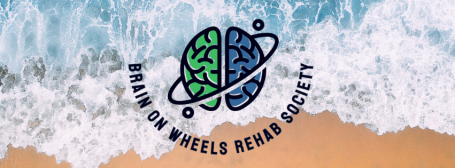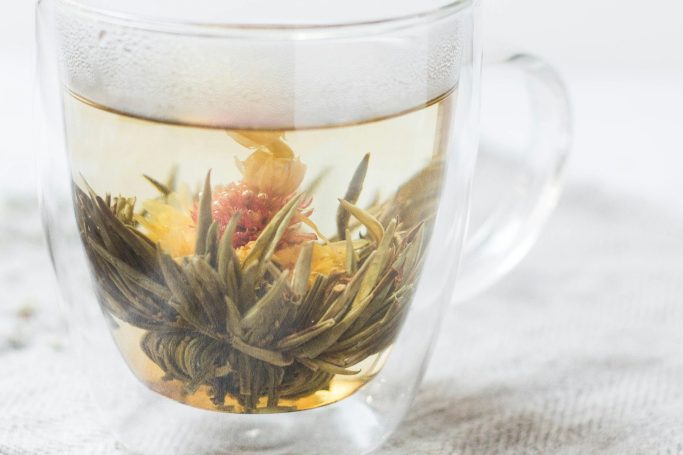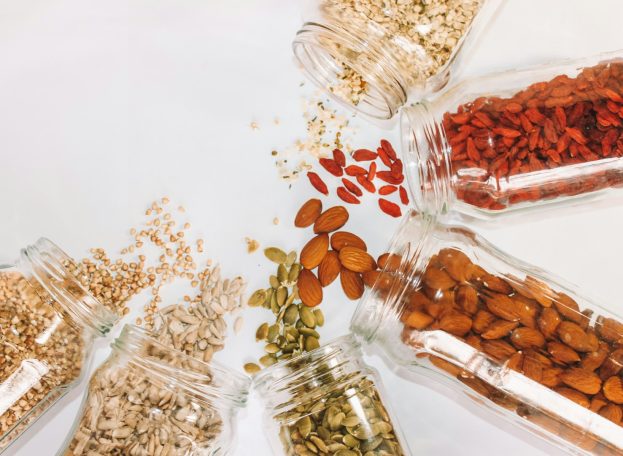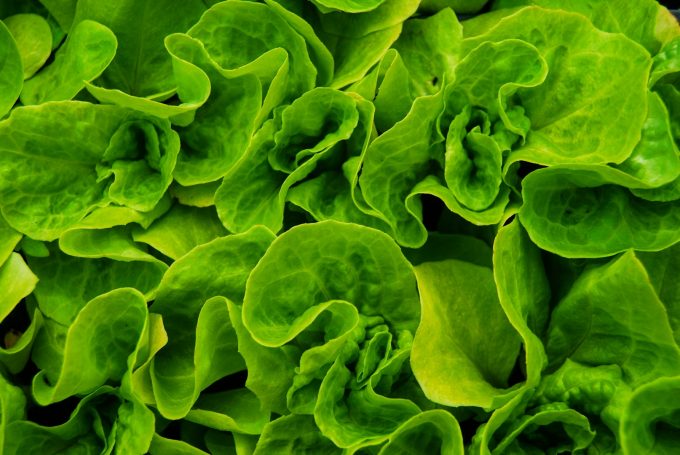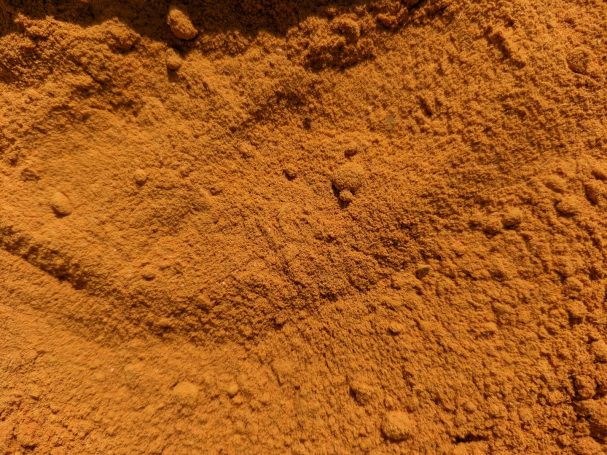Welcome to Our Blog
~ Brainwaves ~
Unlock Your Potential for Brain Wellness
At Brain on Wheels Rehab Society, we believe in the power of knowledge to transform your life. Our blog, Brainwaves, is your go-to resource for insightful articles that delve into wellness, brain health, and effective strategies to enhance your overall well-being. We understand the profound connection between a healthy mind and a healthy body, and each post is crafted with the intention to inspire and educate. Join us on this journey toward better health, as we explore various topics that emphasize the importance of maintaining an active and engaged mind, alongside practical tips to nurture your physical health. Together, let’s embark on a path to wellness that fosters growth, resilience, and fulfillment.
Article in
Cowichan Valley Citizen
"1st Annual Scooter Rodeo!"
Thank you Chadd Cawson and Cowichan Valley Citizen!
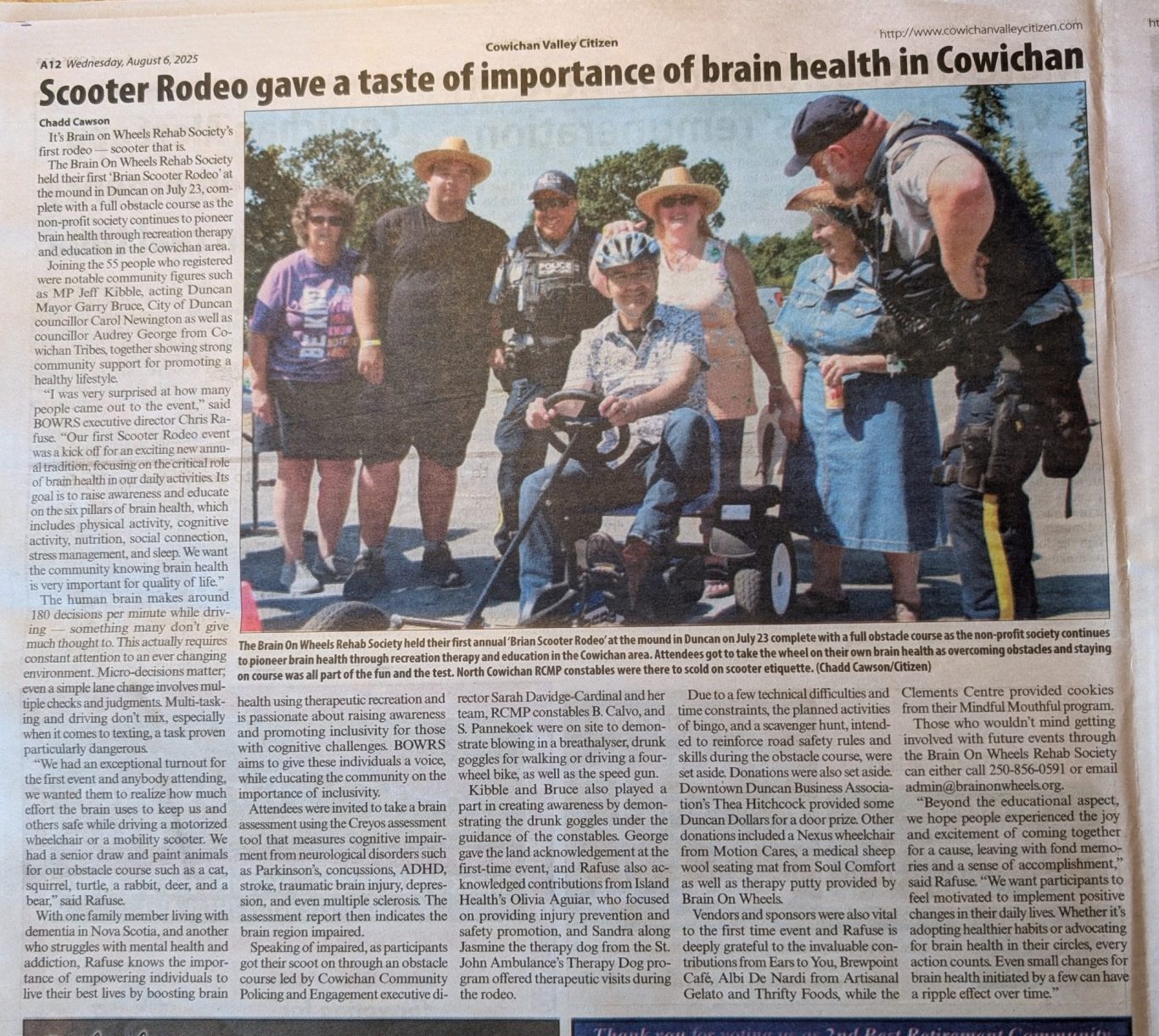
Kaitlynn Makes the Paper!
We are thrilled to announce that our talented Program Assistant has been selected as one of the 17 artists nationwide to win a prestigious national art contest! Their incredible artwork will be featured in the marketing materials of McDonald's franchises, showcasing their creativity on a grand scale. We couldn't be prouder of this remarkable accomplishment and the talent they bring to our team.
Congratulations Kaitlynn! We're all so proud of you!

Connecting at Ladysmith Days Expo!
We had an incredible time at the Ladysmith Days Expo - August 2nd, where we connected with the vibrant Ladysmith community! It was a wonderful day filled with new friendships and meaningful conversations. Meeting so many enthusiastic individuals and forming new community connections truly underscored the importance of our mission to promote brain health and wellness.
The energy and support we received inspire us to continue our work with even greater passion. We’re excited to welcome new faces to the Brain on Wheels Rehab Society family and look forward to collaborating on initiatives that enhance cognitive vitality and community well-being.



Introducing:
Motion Cares
Motion Cares in Nanaimo, BC is a leading provider of mobility and home accessibility solutions, dedicated to making life more accessible for individuals of all ages and abilities.
Products and Services Offered:
- Mobility Devices: Manual and power wheelchairs, electric and mobility scooters, walking aids, and wheelchair ramps.
- Home Accessibility Solutions: Stairlifts, power lift recliners, and a variety of home modification products to improve safety and independence.
- Durable Medical Equipment: Includes a comprehensive range of home health care products for daily living and rehabilitation needs.
- Repair Services: On-site and mobile repair services for mobility devices and equipment.
- Personalized Support: Their team offers expert advice and customized solutions to fit each client’s unique lifestyle and requirements.
Motion Cares operates both physical storefronts and a mobile showroom in Nanaimo, ensuring convenient access to their products and services throughout the area.
Brain on Wheels Rehab Society was grateful for Motion Care's participation in our 1st Annual Mobility Scooter Rodeo, held July 23rd, 2025! Motion Cares graciously donated a rollator for our grand draw prize!

Introducing:
Soul Comfort
Soul Comfort, based in Duncan, BC, is a homegrown business specializing in handcrafted sheepskin and sheep wool products made in the Cowichan Valley. 🐑 Their focus is on comfort, quality, and continuously evolving their product range based on customer feedback and specific needs.
Products Offered by Soul Comfort:
- Sheepskin Slippers & Accessories: Cozy, handcrafted slippers and related items designed for warmth and comfort.
- Wool Bedding & Accessories: Natural wool bedding products for restful, healthy sleep.
- Medical Slippers & Accessories: Specially designed footwear and accessories to support medical and mobility needs.
- Wool Vests & Jackets: Stylish and functional outerwear made from high-quality wool.
- Pet Jackets, Beds & Accessories: A new line created for pets, featuring comfortable jackets and beds.
Soul Comfort operates as a cottage industry, remaining deeply connected to the local community while also reaching customers online and at trade fairs. They pride themselves on adapting their offerings to meet a diverse range of needs and on gathering direct feedback to refine their products.
Brain on Wheels Rehab Society was grateful for Soul Comfort's participation in our 1st Annual Mobility Scooter Rodeo, held July 23rd, 2025! Soul Comfort graciously donated a Medical Sheep Wool Seating Mat for a draw prize!


Introducing:
Clements Centre
The Clements Centre Society in Duncan, BC is a not-for-profit organization dedicated to supporting children, youth, and adults with developmental disabilities in the Cowichan Valley and surrounding areas.
They offer a wide range of services, including:
- Child Development Services: Physiotherapy, occupational therapy, speech and language pathology, infant development, and child care resource and referral, provided in homes, preschools, playgrounds, clinics, and their family centre.
- Adult Community Living Services: Day programs, staffed and independent living options, supported employment, home share, and community inclusion activities—helping adults with disabilities build independence and participate actively in their communities.
- Family and Community Support: Information, resources, and workshops for families, as well as referral and support for child care providers in the region.
Their vision is to create a community where everyone is included, valued, and celebrated, bringing hope, belonging, and independence to those they serve.
Brain on Wheels Rehab Society was grateful for Clements Centre's participation in our 1st Annual Mobility Scooter Rodeo, held July 23rd, 2025! Clements Centre graciously donated cookies, made by Mindful Mouthful, for all participants!
Celebrating Our Amazing Volunteer, George:
Thank you for Making Our Mobility Scooter Rodeo Shine!
Brain on Wheels Rehab Society are thrilled to extend our heartfelt gratitude to an exceptional volunteer who truly made our 1st Annual Mobility Scooter Rodeo a day to remember. His creative talents brought our event to life with beautifully painted decoy animals that captured everyone's attention and added a vibrant touch to the festivities.
But his contributions didn’t stop there! He also stepped up to help at our check-in station, ensuring a smooth and welcoming experience for all our participants. His dedication and willingness to lend a hand exemplified the community spirit we strive to foster.
Thank you for all your hard work George!
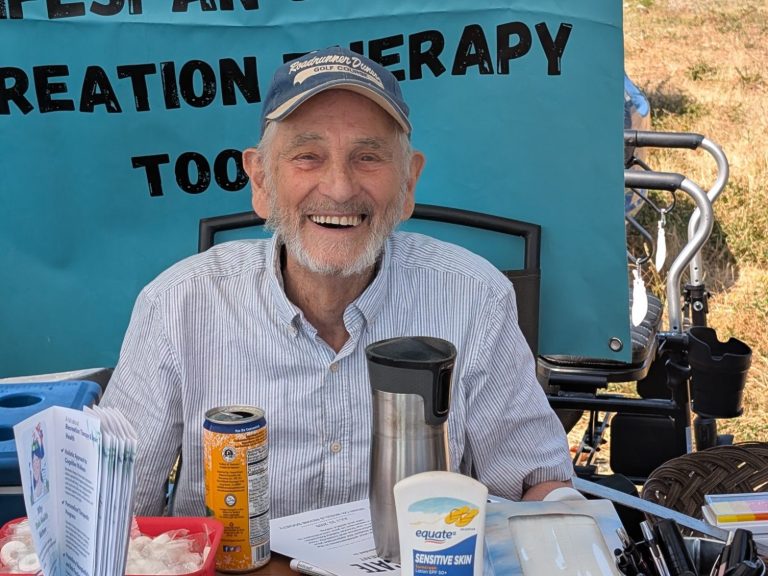



Preventing Heat Stroke
Preventing heat stroke is crucial not just for your overall safety in hot conditions, but especially for protecting your brain health. When the body overheats, it can’t regulate its internal temperature, leading to heat stroke—a medical emergency that can cause lasting damage to vital organs, including the brain.
Why Heat Stroke Prevention Matters for Brain Health
Heat stroke can cause brain injury: When your core temperature rises too high, blood flow to the brain can decrease, and cells can swell, leading to confusion, seizures, unconsciousness, or even permanent brain damage.
The brain is highly sensitive to temperature: Even short periods of overheating can disrupt the normal function of neurons, affecting memory, judgment, and coordination.
Extreme cases can be fatal: Without quick treatment, heat stroke can result in coma or death, underlining the importance of prevention.
Simple, Effective Prevention Tips
- Stay hydrated: Drink fluids regularly, even if you don’t feel thirsty.
- Avoid the hottest part of the day: Schedule activity for early mornings or evenings.
- Wear light, breathable clothing: Choose loose, light-colored fabrics.
- Take breaks in cool or shaded areas: Don’t push through when you’re hot.
- Use sunscreen and reapply often: Sunburn makes it harder for your body to cool down.
- Never leave anyone in a parked car: Temperatures rise quickly and are extremely dangerous, especially for children.
- Check on vulnerable people: The elderly, children, and those with chronic illness are at higher risk.
Actionables for Immediate Protection
- Plan outdoor activities for cooler times.
- Carry water with you and drink frequently.
- Wear a wide-brimmed hat and apply SPF 15+ sunscreen.
- Rest often in air-conditioned or shaded spaces.
- Watch for early signs: headache, confusion, dizziness, or nausea—act quickly if you notice these.
Different Perspectives and Rare Cases
- Rare cases: Some people, such as those with certain medical conditions or on medications, may develop heat stroke at lower temperatures. They need extra vigilance and possibly medication adjustments in summer.
- Children and elderly: Babies, young children, and older adults are less efficient at regulating body heat and need extra protection—more fluids, careful clothing choices, and frequent check-ins.

Summer Word Scramble!
Word scrambles, those delightful puzzles where you rearrange letters to form words, are excellent exercises for the brain! 🧠 They offer multiple cognitive benefits that contribute to mental agility and overall brain health.
Key Benefits of Word Scrambles:
Enhance Vocabulary and Spelling
- Word scrambles challenge you to recognize patterns and recall words, which can improve your vocabulary and spelling skills over time.
Boost Cognitive Flexibility
- Solving word scrambles requires mental agility as you switch between different possible word combinations. This enhances cognitive flexibility, a crucial aspect of problem-solving and adapting to new situations.
Improve Memory and Recall
- Engaging with word scrambles activates memory recall as you search your mental database for possible words. This can strengthen both short-term and long-term memory.
Encourage Focus and Concentration
- The process of unscrambling words requires sustained attention and concentration, helping to improve overall focus and attention span.
Promote Relaxation and Stress Relief
- Like other puzzles, word scrambles can provide a relaxing break from daily stressors, giving your brain a chance to unwind and recharge.
Why I Love Taking My Laptop Outside:
A Brain-Boosting Game Changer
I've discovered that working outside isn't just a nice change of scenery - it's actually doing wonders for my brain. Here's what I've noticed since making the switch:
My creativity flows so much better when I'm surrounded by nature. Maybe it's the gentle breeze or the rustling leaves, but I find myself coming up with ideas I never would have thought of at my desk inside.
I used to struggle with the afternoon slump, but now I find it easier to stay focused when I work outside. There's something about being in nature that helps reset my brain when I'm feeling scattered.
The best part? My stress levels have dropped significantly. When I feel overwhelmed, just stepping outside with my laptop helps me breathe easier and think more clearly.
Getting that natural sunlight and fresh air has been a game-changer for my mood. I feel more energized and positive, which makes me way more productive than when I'm cooped up inside all day.
I've even noticed I'm thinking more sharply and remembering things better. Science backs this up - apparently, being around green spaces actually helps our brains function better.
If you want to try this too, start small. Even 30 minutes outside can make a difference. Just make sure you've got a comfortable setup - I learned the hard way that a good chair makes all the difference! And take a moment to actually enjoy your surroundings while you're out there.
Just keep in mind that outdoor work isn't for everyone - if you've got allergies or can't stand the heat, you might need to modify this approach. And sure, some tasks might be better suited for indoor work. But for me? The benefits have been totally worth it.
Lisa
A Look at Polyvagal Theory
I've been fascinated by Polyvagal Theory ever since I first learned about it in my social work studies. It's basically a way to understand how our nervous system handles stress and relationships, developed by Dr. Stephen Porges.
Think of your nervous system like a three-gear car. The most sophisticated gear is your ventral vagal pathway - that's your "everything's cool" mode, where you can talk, laugh, and connect with others easily. Then there's your sympathetic nervous system - your body's built-in alarm system that gets you ready to fight or run when things get scary for us. Finally, there's the dorsal vagal pathway, which is like hitting the emergency brake - it makes you freeze or shut down when things get really overwhelming.
What's interesting is how these systems work together. When you're feeling safe and supported, you're cruising along in that ventral vagal gear. But if something threatening happens, your body automatically shifts down to fight-or-flight mode. If that doesn't work, it might drop into that freeze response as a last resort. I'm sure many of you may have heard of "Fight, Flight, Freeze." Sometimes you will also hear the added state of "Fawn."
The cool thing is, we can actually work with these systems. Simple stuff like deep breathing can help calm your nervous system down. Hanging out with friends, having good conversations, or even petting your dog can activate that safety system. Even regular exercise can help keep your nervous system balanced.
Not everyone completely accepts the theory - some researchers say we need more proof that it works the same way for everyone. Others point out that cultural differences might affect how these systems work. However, from what I've seen, understanding these patterns has really helped me make sense of how my body responds to stress and connection as well as what I can do to help myself.
There are some great resources out there with tips on how we can regulate ourselves. We will be looking at several in our "Mindful Monday" social media posts.
Lisa

Brain Health Trivia #3
Test your knowledge!
Here are some trivia questions focused on brain health.
Which part of the brain is responsible for balance and coordination?
a) Medulla
b) Cerebellum
c) Parietal lobe
d) Temporal lobe
What is the average number of thoughts a person has per day?
a) 10,000
b) 30,000
c) 50,000
d) 70,000
Which fatty acid, vital for brain function, is abundant in flaxseeds?
a) Omega-3
b) Omega-6
c) Omega-9
d) Omega-12
True or False:
The brain uses more energy than any other human organ.
Which structure connects the two hemispheres of the brain?
a) Corpus callosum
b) Basal ganglia
c) Thalamus
d) Hippocampus
What is the term for the process by which the brain eliminates unnecessary or redundant neural pathways?
a) Neurogenesis
b) Synaptic pruning
c) Neural mapping
d) Axonal sprouting
Which part of the brain is primarily involved in forming new memories?
a) Cerebellum
b) Hypothalamus
c) Hippocampus
d) Amygdala
What percentage of the body's total oxygen does the brain use?
a) 10%
b) 20%
c) 30%
d) 40%
True or False:
Listening to music can enhance cognitive performance.
Which vitamin is crucial for the synthesis of neurotransmitters and can be found in leafy greens?
a) Vitamin B6
b) Vitamin B9 (Folate)
c) Vitamin B12
d) Vitamin C
Nurturing Your Most Vital Organ:
The Importance of Brain Health
In today’s fast-paced world, taking care of our brain is more crucial than ever. The brain is not just the control center for our body but also the seat of our thoughts, emotions, and memories. Prioritizing brain health can significantly affect our overall well-being and quality of life. Here’s why looking after your brain should be at the top of your wellness list:
- Cognitive Function: Maintaining a healthy brain supports learning, problem-solving, and memory retention, which are essential for personal and professional success.
- Mental Health: A well-cared-for brain can improve mood and reduce the risk of mental health disorders like anxiety and depression.
- Physical Health: The brain regulates bodily functions, so a healthy brain contributes to a healthier body overall, including better sleep and energy levels.
- Longevity: Investing in brain health can help delay or prevent age-related cognitive decline, promoting a longer, more fulfilling life.
To support your brain health journey, consider these actionable steps:
- Stay Active: Engage in regular physical exercise to boost blood flow and brain function.
- Eat Well: Incorporate brain-friendly foods like fruits, vegetables, nuts, and fish into your diet.
- Challenge Your Mind: Keep your brain sharp with activities like puzzles, reading, or learning a new skill.
- Connect Socially: Build strong social connections to enhance emotional well-being and cognitive resilience.
Exploring different perspectives, some experts emphasize the emerging role of mindfulness and meditation in maintaining brain health, while others highlight the impact of technology and digital learning opportunities, like our HAPPYneuron Pro program.
Kale Quinoa Salad
This kale quinoa salad is a wholesome side dish that you can conveniently prepare in advance. Tangy lemon juice, smooth onions, and chewy currants blend beautifully with kale and pine nuts, making it a satisfying lunch or a simple dish to bring to potlucks.
Why It’s Good for Brain Health:
KALE: Rich in antioxidants and vitamin K, kale supports brain health by protecting against oxidative stress and boosting cognitive function.
QUINOA: A complete protein containing essential amino acids, quinoa supports neurotransmitter function and brain health.
LEMON JUICE: Packed with vitamin C, it helps reduce inflammation and supports brain health.
ONIONS: Contain antioxidants that may reduce the risk of neurodegenerative diseases.
CURRANTS: These small fruits are rich in antioxidants, which protect brain cells from damage.
PINE NUTS: A good source of magnesium and healthy fats, which support cognitive health and enhance memory.
Ingredients:
- 1-1/2 cups water
- 1/2 cup tomato juice
- 1 cup quinoa, rinsed
- 1 small onion, chopped
- 1 tablespoon olive oil
- 1 garlic clove, minced
- 1/2 teaspoon crushed red pepper flakes
- 6 cups coarsely chopped fresh kale
- 1/4 cup pine nuts
- 1/4 cup dried currants
- 1 tablespoon balsamic vinegar
- 1 teaspoon lemon juice
- 1 teaspoon grated lemon zest
- 1/4 teaspoon salt
- 1/8 teaspoon pepper
1. Cook quinoa - In a large saucepan, bring the water and tomato juice to a boil. Add the rinsed quinoa, reduce the heat to a simmer, and cook, covered, until the liquid is absorbed, 18 to 22 minutes. Remove from the heat and fluff the quinoa with a fork.
2. Saute vegetables - In a large skillet, warm the olive oil over medium heat and cook the onion until it’s soft. Add the garlic and pepper flakes, and stir one minute longer, until aromatic. Stir in the kale and cook until it’s wilted, three to four minutes. Gently stir in the pine nuts and currants, and continue cooking for about two minutes.
3. Make the dressing - Pour in the vinegar and lemon juice, then add the lemon zest, salt and pepper. Cook one to two minutes longer, remove the pan from the heat and stir in the quinoa. Serve at room temperature.
Other variations - Try different nut and fruit combos: The recipe calls for currants and pine nuts, and those are a good pair. If you don’t have them or want to try something else, use dried cherries and pecans, or cranberries and almonds. If there’s a nut allergy, toasted sunflower seeds or pepitas also work. You’re looking for things that add a little crunch and sweetness.
- Add even more veggies: Why stop at kale? When you’ve stirred in the quinoa and the salad has cooled, toss in raw veggies like shredded carrots, diced cucumber or cherry tomatoes.
- Amp it up with cheese and herbs: Other finishing touches can take this salad with kale and quinoa from solid fare to guest status. Crumble in some feta, shave some Parmesan or top with flavorful fresh herbs like parsley, basil or tarragon.
Source: www.tasteofhome.com
Safeguarding Your Brain:
The Vital Role of Fall Prevention in Brain Health
Falls are a leading cause of injury, particularly among older adults, and can significantly impact brain health. Understanding the importance of falls prevention can help protect you and your loved ones from serious injuries and preserve cognitive function.
The Link Between Falls and Brain Health
Falls can lead to traumatic brain injuries (TBIs), which can have long-term effects on cognitive abilities, mood, and overall brain function. The brain is a delicate organ, and even mild injuries can disrupt its normal operations.
Why Falls Happen
Falls can occur due to various reasons, such as:
- Environmental Hazards: Slippery floors, uneven surfaces, or poor lighting.
- Medical Conditions: Balance disorders, muscle weakness, or vision impairment.
- Behavioral Factors: Rushing, multitasking, or wearing inappropriate footwear.
Actionable Tips for Falls Prevention:
Home Safety:
- Ensure good lighting throughout your home.
- Install grab bars in the bathroom and handrails on staircases.
- Remove tripping hazards like loose rugs and clutter.
Physical Health:
- Engage in regular exercise to improve balance and strength.
- Have regular vision and hearing checks.
- Review medications with your healthcare provider to manage side effects that may affect balance.
Mindful Living:
- Wear appropriate footwear with good grip.
- Take your time and avoid rushing, especially on stairs.
- Stay hydrated to prevent dizziness.
Alternative Opinions:
While some argue that focusing too much on fall prevention can lead to over-cautious behavior, the benefits of proactive measures far outweigh the risks. Encouraging a cautious yet active lifestyle is key to preventing falls without compromising quality of life.
By taking steps to prevent falls, you're not only protecting your physical health but also ensuring your brain stays healthy and active. Ready to take the first step towards a safer environment?
Product Review:
Truehope's EMPower Plus
Reviewed By: Lisa Williams
Community Education & Program Development Manager
In the pursuit of enhanced mental and physical well-being, I was introduced to EMPower Plus by Truehope at the 2025 Brain Health Summit in Sydney. I began taking EMPower Plus shortly after the conference in April. This scientifically formulated blend of 37 essential vitamins, minerals, and amino acids promises to nourish the brain and support emotional resilience and mental clarity. Here's my detailed review of this intriguing micronutrient supplement.
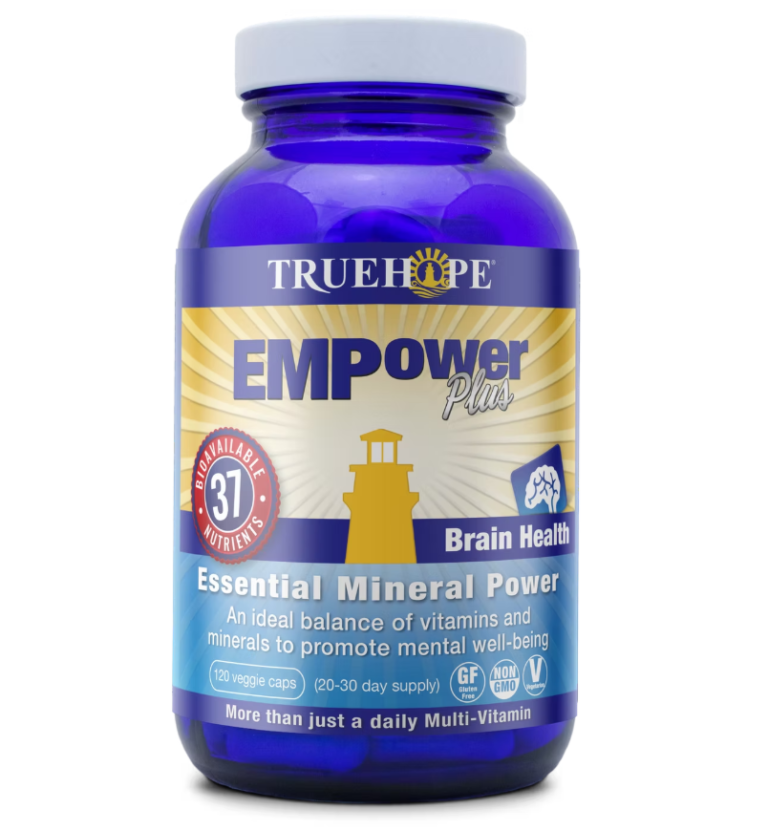
Overall Impressions
EMPower Plus by Truehope impressed me with its robust formulation and the extensive research backing its efficacy. It offers a natural approach to enhancing mental health, making it a valuable addition to anyone's wellness regimen.
Pros:
- Comprehensive blend of essential nutrients.
- Backed by scientific research and Health Canada approval.
- Supports a wide range of mental health benefits.
Cons:
- Requires consultation for individuals on psychiatric medications.
- The supplement's potency may not be suitable for everyone without professional guidance.
Conclusion
Truehope's EMPower Plus provides a promising option for those seeking to improve their mental and physical health through nutrition. Its carefully balanced formulation and scientific backing make it a standout choice in the world of micronutrient therapy.
I want to clarify that this review is independent and not sponsored by Truehope. My insights are based on personal experience and research.

First Impressions and Benefits
EMPower Plus stands out as a comprehensive supplement, validated by over 35 independent medical journal publications. It's particularly designed to aid those experiencing mood instability, stress, and anxiety by providing natural, non-invasive support. Key benefits include:
- Enhanced Mood: Users report feeling more balanced and emotionally stable.
- Clear Thinking: Improved mental clarity and focus.
- Increased Energy: A noticeable boost in daily energy levels.
- Better Sleep: Enhanced sleep quality, contributing to overall well-being.
Ingredients and Formulation
EMPower Plus is a superior broad-spectrum micronutrient supplement containing:
- 16 Minerals: Essential for various bodily functions and brain health.
- 14 Vitamins: Crucial for energy production and mental clarity.
- 3 Amino Acids: Building blocks for proteins that support brain function.
- 3 Antioxidants: Protect the brain from oxidative stress.
Its proprietary 4-step process and delivery system ensure optimal absorption, delivering nutrition as nature intended.
Usage Experience
Incorporating EMPower Plus into my daily routine was straightforward. The supplement is designed for anyone looking to optimize their mental and physical well-being. However, it's crucial to note that individuals on psychiatric medications should consult with their physician prior to use, due to potential adverse drug interactions. Truehope provides additional support and programs for those on medication, ensuring safe usage.
The Role of Hydration in Maintaining Cognitive Function
Staying adequately hydrated is crucial for maintaining optimal brain function and overall health. Water is a vital component of the brain, and even mild dehydration can significantly impact cognitive performance and mood. Let's explore how hydration affects the brain and discover practical ways to ensure sufficient fluid intake throughout the day, along with the benefits of various types of hydration.
How Dehydration Affects Brain Performance and Mood
Cognitive Decline:
- Dehydration can impair attention, short-term memory, and long-term memory. A lack of sufficient water intake affects the brain's efficiency, leading to slower cognitive processing and decreased alertness.
Mood Changes:
- Studies have shown that dehydration can lead to mood disturbances, including increased feelings of anxiety, fatigue, and irritability. Hydration levels can directly influence how we perceive and respond to stress.
Reduced Concentration:
- Mild dehydration can hinder concentration and focus, making tasks feel more arduous and time-consuming. This is particularly evident during activities that require sustained mental effort.
Practical Ways to Ensure Adequate Hydration
Set a Water Intake Goal:
- Aim for a daily water intake target, typically around 8-10 cups (2-2.5 liters) for adults, adjusting for individual needs based on activity level and climate.
Use Reminders:
- Set reminders on your phone or use hydration apps to prompt regular water intake throughout the day.
Track Your Intake:
- Keep a water bottle with you and mark it with time goals to track your consumption. Refill it throughout the day to meet your hydration goals.
Incorporate Hydrating Foods:
- Include water-rich foods in your diet, such as cucumbers, oranges, and watermelon, to supplement fluid intake.
Start and End Your Day Hydrated:
- Begin your morning with a glass of water to kickstart your metabolism and end your day with another to stay hydrated overnight.
Benefits of Different Types of Hydration
Water:
- The most accessible and effective way to stay hydrated. It contains no calories or sugars and is essential for maintaining the body’s fluid balance.
Electrolyte Drinks:
- Beneficial during intense physical activity or when you're experiencing significant fluid loss through sweating. They help replenish electrolytes, such as sodium and potassium, which are crucial for muscle function and nerve signaling.
Herbal Teas:
- Offer a hydrating alternative with added health benefits, caffeine-free options like chamomile or peppermint tea can provide relaxation and aid digestion.
Conclusion
Maintaining proper hydration is a simple yet powerful way to support brain health and improve cognitive function. By prioritizing fluid intake and choosing the right types of hydration, you can enhance your mental clarity, boost your mood, and ensure your brain operates at its best.
Brain Health Trivia #2
Test your knowledge!
Here are some trivia questions focused on brain health.
1. What part of the brain is responsible for regulating hunger and thirst?
a) Hippocampus
b) Hypothalamus
c) Amygdala
d) Cerebellum
2. What is the brain's largest part, responsible for voluntary activities and intelligence?
a) Cerebellum
b) Brainstem
c) Medulla
d) Cerebrum
3. Which neurotransmitter is primarily associated with mood regulation and well-being?
a) Dopamine
b) Serotonin
c) Acetylcholine
d) GABA
4. True or False:
Sleep deprivation can shrink the brain's gray matter.
5. Which type of exercise is shown to enhance brain function and memory?
a) Strength training
b) Aerobic exercise
c) Flexibility exercises
d) Anaerobic exercise
6. What is the name of the protective covering that surrounds and insulates nerve fibers in the brain?
a) Synapse
b) Myelin sheath
c) Dendrite
d) Axon
7. Which part of the brain is primarily involved in processing emotions?
a) Thalamus
b) Amygdala
c) Pons
d) Occipital lobe
8. True or False:
The adult human brain weighs about 3 pounds.
9. Which mineral is essential for neurotransmitter function and is often found in nuts and seeds?
a) Calcium
b) Zinc
c) Magnesium
d) Iron
10. What technique involves focusing on the present moment and has been shown to reduce stress and improve brain function?
a) Yoga
b) Gardening
c) Mindfulness meditation
d) Journaling
Brain Boost:
Foods That Enhance Cognitive Function
In today’s world, where mental agility and sharpness are highly valued, it’s crucial to fuel our brains with the right nutrients. The food we consume plays a significant role in maintaining and enhancing cognitive function. Let’s delve into some brain-boosting foods and understand the science behind their benefits.
Brain-Boosting Foods and Their Benefits
Blueberries 🫐
- Benefits: Packed with antioxidants, blueberries protect the brain from oxidative stress and may reduce the effects of age-related conditions.
- Science: Studies suggest that the antioxidants in blueberries help improve communication between brain cells.
Fatty Fish 🐟
- Benefits: Rich in omega-3 fatty acids, fatty fish like salmon and trout support brain health and improve memory.
- Science: Omega-3s are essential for building brain and nerve cells, crucial for learning and memory.
Nuts and Seeds 🌰
- Benefits: High in healthy fats, antioxidants, and vitamin E, nuts and seeds improve cognitive function and prevent cognitive decline.
- Science: Vitamin E protects cells from oxidative stress, which can slow down mental decline.
Leafy Greens 🥬
- Benefits: Vegetables like spinach and kale are rich in brain-healthy nutrients like vitamin K, lutein, and beta-carotene.
- Science: These nutrients have been linked to slower cognitive decline and improved memory.
Dark Chocolate 🍫
- Benefits: Flavonoids in dark chocolate enhance memory and cognitive function.
- Science: Flavonoids encourage blood vessel growth in parts of the brain involved in memory and learning.
Turmeric 🌿
- Benefits: This spice contains curcumin, which crosses the blood-brain barrier and has anti-inflammatory and antioxidant benefits.
- Science: Curcumin boosts levels of the brain hormone BDNF, which increases the growth of new neurons.
The Science Behind Nutrition and Brain Health
The brain requires a constant supply of nutrients to function optimally. Antioxidants combat oxidative stress, omega-3 fatty acids support neuronal structure, and vitamins and minerals play various roles in cognitive processes. A balanced diet rich in these nutrients can lead to improved mood, sharper memory, and better cognitive function.
- Actionable Tips:
- Incorporate at least one brain-boosting food into each meal.
- Plan your meals ahead to ensure a variety of nutrients.
- Stay hydrated, as water is crucial for overall brain health.
Different perspectives emphasize the importance of a holistic approach to brain health, combining nutrition with physical activity and mental exercises for optimal results.
Recipes and Meal Ideas:
- Berry and Nut Breakfast Bowl: Combine blueberries, walnuts, and a sprinkle of flaxseeds over yogurt for a nutritious start.
- Grilled Salmon Salad: Top leafy greens with grilled salmon, avocado, and a dressing made of olive oil and lemon juice.
- Dark Chocolate and Almond Snack Bars: Make your own snack bars using dark chocolate, almonds, and seeds for a brain-boosting treat.
Berry and Nut Breakfast Bowl
Ingredients:
- 1 cup yogurt (preferably Greek yogurt for extra protein)
- 1/2 cup fresh blueberries
- 1/4 cup walnuts, chopped
- 1 tablespoon flaxseeds
- Honey or maple syrup (optional, for sweetness)
Instructions:
- Spoon the yogurt into a bowl.
- Top with blueberries, walnuts, and flaxseeds.
- Drizzle with a bit of honey or maple syrup if desired.
- Mix and enjoy a delicious, nutrient-packed breakfast!
Benefits:
- Blueberries provide antioxidants.
- Walnuts contain omega-3 fatty acids.
- Flaxseeds offer fiber and essential fatty acids.
Grilled Salmon Salad
Ingredients:
- 2 salmon fillets
- 4 cups mixed leafy greens (spinach, kale, arugula)
- 1 avocado, sliced
- 1/2 cup cherry tomatoes, halved
- Olive oil and lemon juice dressing (mix 2 tablespoons olive oil with 1 tablespoon lemon juice)
- Salt and pepper to taste
Instructions:
- Season the salmon fillets with salt and pepper.
- Grill the salmon on medium heat for about 4-5 minutes on each side or until cooked through.
- In a large bowl, combine the leafy greens, avocado, and cherry tomatoes.
- Top with the grilled salmon.
- Drizzle with the olive oil and lemon juice dressing.
- Toss gently and serve fresh.
Benefits:
- Salmon is rich in omega-3 fatty acids.
- Leafy greens provide essential vitamins and minerals.
- Avocado offers healthy fats and fiber.
Dark Chocolate and Almond Snack Bars
Ingredients:
- 1 cup dark chocolate chips (at least 70% cacao)
- 1 cup almonds, roughly chopped
- 1/4 cup pumpkin seeds
- 1/4 cup dried cranberries
- 1 tablespoon coconut oil
Instructions:
- Melt the dark chocolate chips and coconut oil in a microwave or double boiler.
- Stir in the almonds, pumpkin seeds, and cranberries.
- Pour the mixture into a lined or greased baking dish.
- Refrigerate for about 1 hour or until firm.
- Cut into bars and enjoy a brain-healthy snack.
Benefits:
- Dark chocolate contains flavonoids that support brain function.
- Almonds are high in vitamin E.
- Pumpkin seeds are rich in antioxidants and magnesium.
These meal ideas not only support cognitive
function but also make for delicious and satisfying dining experiences.
The Science of Laughter:
Boosting Brain Health with Humor
Laughter is often called the best medicine, and for good reason. It’s a universal language that transcends cultural barriers, bringing people together and offering a wealth of benefits for brain health and emotional well-being. Let’s explore the fascinating science behind laughter and discover how incorporating humor into our lives can significantly enhance our mental and social health.
Laughter as a Natural Stress Reliever and Mood Enhancer
Reduces Stress:
- Laughter triggers the release of endorphins, the body's natural feel-good chemicals, which help alleviate stress and promote a sense of well-being. It also lowers cortisol levels, the stress hormone, leading to reduced tension and anxiety.
Boosts Mood:
- Engaging in activities that make you laugh can elevate your mood and increase feelings of happiness. Laughter provides a break from negative thoughts and emotions, offering a mental reset that can improve overall outlook.
Enhances Resilience:
- Regular laughter strengthens emotional resilience, enabling individuals to cope better with challenges and setbacks. It fosters a positive mindset that can be crucial in navigating life's ups and downs.
Exercises and Activities to Incorporate Humor
Humor Journaling:
- Keep a journal where you jot down funny experiences or jokes. Reflecting on these moments can provide a quick mood boost when needed.
Comedy Nights:
- Schedule regular comedy nights with friends or family. Watch a funny movie or stand-up special to share laughs and strengthen connections.
Laughter Yoga:
- Practice laughter yoga, which combines intentional laughter exercises with yogic breathing techniques. This practice can enhance mood and promote relaxation.
Improv Games:
- Engage in improvisational games or classes that encourage spontaneous humor and creativity. Improv activities can improve social interactions and boost confidence.
Follow Humorists:
- Follow comedians or humorists on social media who align with your sense of humor. Their content can provide daily doses of laughter.
The Role of Laughter in Social Bonding and Brain Effects
Strengthens Relationships:
- Laughter is a powerful tool for building and strengthening social bonds. Sharing a laugh can create a sense of unity and understanding, fostering deeper connections with others.
Enhances Communication:
- Humor can improve communication by breaking down barriers and facilitating open dialogue. It encourages a relaxed atmosphere where individuals feel more comfortable expressing themselves.
Stimulates Brain Activity:
- Laughter activates multiple regions of the brain, including those responsible for processing emotions and fostering creativity. This stimulation can lead to improved cognitive function and mental agility.
Conclusion
Incorporating laughter and humor into your daily routine is a simple and enjoyable way to boost brain health and enhance emotional well-being. Whether through personal experiences, shared moments, or structured exercises, laughter provides a natural, powerful means to navigate stress and foster social connections.
Pecan-Crusted
Chicken
Incorporating pecans into the breadcrumb mixture not only enhances the flavor but also boosts the brain health benefits of this recipe.
Ingredients
- 4 boneless skinless chicken breasts, 6 to 8 oz. each
- 1 1/2 teaspoons salt, divided
- 1 teaspoon lemon juice
- 1 1/2 cups plain yogurt
- 2 tablespoons Dijon mustard
- 2 cups pecans, finely chopped
- 1 cup bread crumbs
- olive oil for sautéing
Preparation
- Use a mallet to pound chicken breasts into a uniform 1/2 inch thickness. Cut each breast into 2 or 3 pieces for manageability.
- Combine lemon juice, yogurt, mustard, and 1/2 teaspoon salt in a bowl and set aside. Put chicken pieces in mixture and let sit for about 10 minutes.
- Combine pecans, crumbs, and 1 teaspoon salt in a bowl and set aside.
- Heat about 1 tablespoon olive oil in a sauté pan over medium high heat. Wipe excess yogurt off chicken and dredge in pecan mixture. When oil is hot, add chicken pieces to pan and cook about 3-4 minutes on each side until golden brown on the outside and cooked through. You may need to do it in batches, in which case you should wipe the pan out between batches and add a bit more oil.
Serve immediately.
Source: Brainhq.com
Mindful Breathing
Mindful breathing is a simple yet powerful technique that can help you reduce stress, enhance focus, and promote overall well-being. It involves paying attention to your breath in a focused and non-judgmental way.
Mindful breathing offers substantial benefits for brain health. Here’s a comprehensive look at how to practice it and its impact on the brain:
How to Practice Mindful Breathing
Find a Comfortable Position: Sit or lie down comfortably. If sitting, keep your back straight to facilitate deep breathing.
Focus on Your Breath: Close your eyes and concentrate on your natural breathing pattern. Notice the sensation of the breath as it enters and leaves your nostrils or the rise and fall of your chest and abdomen.
Be Present: Anchor yourself in the present moment. If your mind wanders, gently redirect your focus back to your breath without judgment.
Deepen Your Breath: Start to inhale slowly through your nose, allowing your abdomen to expand fully, and exhale slowly through your mouth or nose, releasing tension.
Count Your Breaths: To maintain focus, count each breath cycle. Inhale for a count of four, hold for two, and exhale for six, adjusting as needed.
Practice Regularly: Incorporate mindful breathing into your daily routine, starting with a few minutes and gradually increasing the duration.
Benefits of Mindful Breathing for the Brain
Reduces Stress and Anxiety: By lowering cortisol levels, mindful breathing helps reduce anxiety, promoting a sense of calm and preventing the brain from becoming overwhelmed.
Enhances Focus and Concentration: Consistent practice strengthens the brain’s attention span and cognitive performance, training it to remain present.
Improves Emotional Regulation: Activating the parasympathetic nervous system, mindful breathing aids in emotional balance and resilience.
Increases Neuroplasticity: It enhances the brain’s ability to form new connections, improving learning and memory retention.
Boosts Brain Function: By increasing oxygen flow, it enhances mental clarity and efficient neural processing.
Actionable Tips
- Start small, with just a few minutes each day.
- Make it a regular practice for lasting benefits.
- Combine with mindfulness meditation for a holistic approach.
Some experts suggest that mindful breathing can assist with conditions like ADHD by improving attention and impulse control. Others highlight its potential in supporting recovery from brain-related injuries by enhancing focus and reducing stress.
Protect Your Brain
The Essential Role of Helmets in Your Favorite Activities
Let's talk about something crucial for your well-being: the importance of wearing a helmet during various activities and its connection to brain health.
Whether you're an avid cyclist, a passionate rollerblader, or enjoy skateboarding, wearing a helmet can make all the difference in protecting your brain. Helmets are designed to absorb impact and reduce the risk of head injuries, which can have long-lasting effects on your cognitive health.
Here's a list of activities where wearing a helmet is highly recommended:
- Cycling: Whether you're commuting or mountain biking, a helmet is essential.
- Rollerblading/Inline Skating: Even at slower speeds, falls can happen.
- Skateboarding: Tricks and stunts are fun, but safety comes first.
- Skiing and Snowboarding: Helmets can protect against collisions and falls.
- Scootering: Both for kids and adults, helmets are a must.
- Horseback Riding: A fall from a horse can be dangerous; a helmet can help.
- Rock Climbing: Protect your head from falling debris or slips.
Actionable Tips:
- Always choose a helmet that fits snugly and comfortably.
- Make sure it's certified for safety standards.
- Replace your helmet after any significant impact or every few years, as materials can degrade.
Alternative Opinions: Some people argue that helmets can give a false sense of security, potentially leading to riskier behavior. However, studies consistently show that helmets significantly reduce the severity of head injuries.
Your brain is your most valuable asset, and taking steps to protect it is a smart move. Are you ready to make helmet-wearing a habit in your favorite activities?
Brain Health Trivia #1
Test your knowledge!
Here are some trivia questions focused on brain health.
1. What percentage of the brain is composed of water?
a) 50%
b) 60%
c) 73%
d) 80%
2. Which vitamin is primarily associated with improved memory and brain health?
a) Vitamin A
b) Vitamin B12
c) Vitamin D
d) Vitamin C
3. How many neurons does the average human brain contain?
a) 10 billion
b) 50 billion
c) 86 billion
d) 100 billion
4. What is the primary function of the brain’s frontal lobe?
a) Vision
b) Hearing
c) Decision-making and problem-solving
d) Balance and coordination
5. Which fruit is known for its high antioxidant content that benefits brain health?
a) Banana
b) Blueberry
c) Apple
d) Grape
6. What activity has been shown to increase the size of the hippocampus, the brain area involved in memory?
a) Playing video games
b) Meditation
c) Dancing
d) Crossword puzzles
7. True or False: The brain can feel pain.
8. What is the term for the brain's ability to change and adapt as a result of experience?
a) Neurogenesis
b) Neuroplasticity
c) Synaptogenesis
d) Myelination
9. Which nutrient is crucial for brain health and is found in high amounts in fatty fish?
a) Carbohydrates
b) Omega-3 fatty acids
c) Fiber
d) Protein
10. How fast can signals travel through the brain's neurons?
a) 50 miles per hour
b) 150 miles per hour
c) 268 miles per hour
d) 300 miles per hour
Kale Salad with Tart Cherries & Toasted Almonds
Recent studies suggest that the antioxidants found in tart cherries might help delay the onset of Alzheimer’s disease symptoms. This recipe also includes kale, a robust winter green celebrated as a superfood, along with brain-enhancing almonds and olive oil.
Ingredients
- 1/2 cup whole almonds, roughly chopped
- 8 oz. kale leaves
- 1/2 cup dried tart cherries
- 2 ounces crumbled goat cheese
- 3 Tablespoons extra virgin olive oil
- 1 1/2 Tablespoons apple cider vinegar
- 1 Tablespoon Dijon mustard (smooth or grainy)
- 2 teaspoons honey
- 1/2 teaspoon salt
- 1/2 teaspoon ground black pepper
Preparation
- Put almonds in a small saute pan and toast over medium low heat, about 5 minutes, until just starting to smell fragrant. Pour into bowl to cool.
- Prepare the kale by running your thumb and forefinger from the bottom of the stalk to the top to separate the leaves from the stalks. Discard stalks. Rinse leaves well and dry with towels. Roll leaves tightly and slice thinly to create ribbons.
- Put dried kale ribbons in serving bowl and top with toasted almonds, cherries, and crumbled goat cheese.
- Put olive oil, vinegar, mustard, honey, salt, and pepper in a small bowl and whisk well to combine. Pour over salad, toss, and let sit 10-15 minutes before serving.
Source: www.brainhq.com
Product Review:
GluteNull's Coco D'Lish Energy Bar
Reviewed By: Lisa Williams
Community Education & Program Development Manager
As someone who appreciates healthy and conscious eating, I was excited to try GluteNull’s Coco D'Lish Energy Bar at the 2025 Brain Health Summit in Sydney recently. Renowned for their commitment to producing non-GMO, gluten-free, and vegan products, GluteNull has crafted a bar that stands out in both taste and nutritional value. Here's my detailed review.

Overall Experience
Enjoying the Coco D'Lish bar was a delightful experience. Its combination of taste, texture, and nutritional benefits made it a standout in the crowded energy bar market. I found it perfect for a mid-afternoon snack to keep my energy up without feeling weighed down.
Pros:
- Delicious and satisfying taste.
- High-quality, health-conscious ingredients.
- Suitable for various dietary restrictions.
- Great coconut flavour!
Cons:
- Those who prefer less sweetness might find the agave syrup slightly intense for their liking.
Conclusion
The Coco D'Lish energy bar by GluteNull is a fantastic choice for anyone seeking a wholesome snack that doesn’t compromise on flavor or health benefits. It’s a testament to GluteNull’s dedication to creating products that align with today’s dietary needs without sacrificing taste.
I want to clarify that this review is entirely independent and not sponsored or endorsed by GluteNull. I simply enjoyed the Coco D'Lish bar and wanted to share my positive experience with you.

Taste and Texture
The Coco D'Lish bar offers a delightful blend of flavors and textures that make each bite satisfying. The dominant coconut flavor takes center stage, providing a rich and tropical taste that many will find indulgent. While the coconut is the star, the bar also features subtle hints of sweetness from the organic agave syrup and raisins. The texture is notably soft, providing a gentle chew that many will find pleasing, with just a slight contrast from the pieces of coconut, rather than a full crunch like most bars. This makes it an excellent choice for those who prefer a softer snack.
Ingredients Breakdown
- Organic Buckwheat: As a naturally gluten-free grain, buckwheat provides a hearty base, rich in fiber and essential nutrients.
- Almonds and Pumpkin Seeds: These ingredients are not only delicious but also packed with healthy fats and proteins, essential for sustained energy.
- Sunflower Seeds: Known for their antioxidant properties, they add to the bar's nutritional value.
- Organic Agave Syrup: A natural sweetener that keeps the bar sweet without the use of refined sugars.
- Raisins and Cranberries: These fruits add natural sweetness and a burst of flavor, along with vitamins and minerals.
Nutritional Benefits
One of the most appealing aspects of the Coco D'Lish bar is its commitment to health-conscious ingredients. It provides a balanced source of carbohydrates, proteins, and fats, making it an excellent snack for those on the go or in need of a quick energy boost. Being vegan and gluten-free, it suits a variety of dietary needs and preferences.
Art and the Brain:
Unlocking Creativity for Cognitive Enhancement
In a world where logical thinking and linear problem-solving are often prioritized, the power of creativity is sometimes underestimated. Yet, engaging in creative activities can significantly enhance brain function and emotional well-being. Let's delve into the fascinating connection between art and the brain, exploring how creativity can serve as a powerful tool for cognitive enhancement.
The Connection Between Art and Brain Function
Artistic activities engage multiple areas of the brain, promoting neural connections and fostering mental agility. When you create art, your brain's right hemisphere, responsible for creativity and intuition, works in harmony with the left hemisphere, which handles logic and analytical thinking. This collaboration enhances overall cognitive function, leading to improved problem-solving skills and innovative thinking.
- Neuroplasticity: Engaging in creative activities stimulates neuroplasticity, the brain's ability to form new neural connections. This process is essential for learning and adapting to new experiences.
- Memory and Recall: Artistic pursuits can improve memory and recall by activating areas of the brain responsible for storing and retrieving information.
Art Forms That Enhance Cognitive Health
Drawing and Painting: These activities boost hand-eye coordination and fine motor skills while encouraging visual thinking and creativity. They also enhance focus and concentration, as you immerse yourself in the process of creation.
Music: Playing an instrument or engaging in musical activities activates areas of the brain associated with auditory processing, memory, and emotion. Music can also improve spatial-temporal skills, crucial for complex problem-solving.
Dance: Dance combines physical movement with creative expression, involving multiple brain areas responsible for coordination, rhythm, and emotional processing. It enhances brain plasticity and can improve mood and reduce stress.
Writing: Creative writing stimulates language centers in the brain and encourages the exploration of emotions and ideas. It can enhance verbal skills, improve memory, and boost emotional intelligence.
Sculpting and Pottery: These tactile art forms engage the brain's sensory and motor regions, fostering spatial awareness and creativity. They also encourage mindfulness, as you focus on the physical sensations of shaping materials.
Therapeutic Benefits of Creativity for Emotional Well-Being
Creativity is not just a cognitive enhancer; it also offers therapeutic benefits for emotional well-being. Artistic activities can serve as a form of self-expression, allowing individuals to explore and process emotions in a safe and constructive way.
- Stress Reduction: Creating art can lower cortisol levels, the stress hormone, promoting relaxation and reducing anxiety.
- Emotional Release: Art provides a healthy outlet for releasing pent-up emotions, leading to improved mental clarity and emotional balance.
- Increased Self-Esteem: Completing a creative project can boost self-esteem and provide a sense of accomplishment and purpose.
Actionable Tips for Integrating Art into Your Life
- Start Small: Begin with short, simple creative activities that you enjoy, such as doodling or coloring.
- Explore New Mediums: Experiment with different art forms to discover what resonates with you, whether it's painting, writing, or dancing.
- Set a Routine: Dedicate regular time for creative activities, making them a part of your routine to reap the cognitive and emotional benefits.
Rainbow Grain Bowl with Cashew Sauce
This colorful bowl is brimming with nutrients designed to keep you satisfied for hours. Check the refrigerated section of the produce aisle for ready-to-eat lentils.
Why It’s Good for Brain Health:
- Lentils: These legumes are high in folate and iron, which are essential for cognitive function and reducing brain inflammation.
- Protein and Fiber: Together, they help stabilize blood sugar levels, providing a steady source of energy for the brain.
- Antioxidants: These help protect brain cells from oxidative stress, which can enhance mental clarity and memory.
Ingredients:
¾ cup unsalted cashews
½ cup water
¼ cup packed parsley leaves
1 tablespoon lemon juice or cider vinegar
1 tablespoon extra-virgin olive oil
½ teaspoon reduced-sodium tamari or soy sauce
¼ teaspoon salt
½ cup cooked lentils
½ cup cooked quinoa
½ cup shredded red cabbage
¼ cup grated raw beet
¼ cup chopped bell pepper
¼ cup grated carrot
¼ cup sliced cucumber
1 tablespoon Toasted chopped cashews for garnish
Step 1:
Blend cashews, water, parsley, lemon juice (or vinegar), oil, tamari (or soy sauce) and salt in a blender until smooth.
Step 2:
Place lentils and quinoa in the center of a shallow serving bowl. Top with cabbage, beet, pepper, carrot and cucumber. Spoon 2 tablespoons of the cashew sauce over the top (save extra sauce for another use). Garnish with cashews, if desired.
Source: www.eatingwell.com
Digital Detox:
Reclaiming Your Mind from the Digital World
The Impact of Excessive Screen Time on Brain Health
In today's hyper-connected society, many of us find ourselves glued to screens for the majority of our waking hours. While technology offers incredible benefits, excessive screen time can take a toll on brain health and mental well-being. Let’s explore the effects of digital overload on our brains and discover effective strategies for a digital detox.
The Impact of Excessive Screen Time on Brain Health
Cognitive Overload:
- Constant exposure to digital information can overwhelm our cognitive abilities, leading to mental fatigue and reduced productivity.
- Multitasking between apps and notifications can impair our ability to focus and process information effectively.
Sleep Disturbances:
- The blue light emitted by screens can interfere with the production of melatonin, the hormone responsible for regulating sleep, leading to poor sleep quality and insomnia.
Emotional and Social Effects:
- Overuse of digital devices can contribute to feelings of anxiety, depression, and social isolation as personal interactions are replaced by virtual communication.
- Social media, in particular, can foster unrealistic comparisons and a fear of missing out (FOMO), impacting self-esteem and mental health.
Strategies for Reducing Digital Consumption
Set Screen Time Limits:
- Use apps or built-in device settings to monitor and limit daily screen time. Allocate specific periods for digital use and take regular breaks.
Create Tech-Free Zones:
- Designate areas in your home, such as the bedroom or dining area, as tech-free zones to encourage mindful living and foster face-to-face interactions.
Practice Mindful Consumption:
- Be intentional about the content you consume. Prioritize educational and uplifting material and unfollow accounts that trigger negative emotions.
Engage in Offline Activities:
- Rediscover hobbies that don’t involve screens, such as reading, gardening, or exercising, to boost creativity and physical health.
Schedule Regular Digital Detoxes:
- Plan regular intervals where you disconnect from digital devices entirely, whether it’s for a few hours, a day, or an entire weekend.
Conclusion
A digital detox can be a powerful way to reclaim your mind and enhance your overall well-being. By setting boundaries and incorporating more offline activities, you can improve focus, sleep better, and foster meaningful connections.
Keep Your Brain Sharp with
Rebus Puzzle #1
Rebus puzzles are a fantastic exercise for the brain, offering numerous cognitive benefits. By challenging you to decipher words or phrases from pictures and symbols, rebus puzzles stimulate different areas of the brain and enhance mental agility. Here’s how they contribute to brain health:
- Cognitive Flexibility: Solving rebus puzzles requires you to think creatively and interpret visual information in unconventional ways, boosting your ability to adapt and solve problems.
- Memory Enhancement: Engaging with these puzzles can improve both short-term and long-term memory by requiring recall and association of various concepts and images.
- Pattern Recognition: They help strengthen pattern recognition skills, which are crucial for tasks ranging from reading and math to everyday problem-solving.
- Attention to Detail: Rebus puzzles encourage you to pay close attention to visual and linguistic details, sharpening focus and concentration.
For those who enjoy a variety of perspectives, some enthusiasts highlight the social aspect of solving puzzles together, which can enhance collaborative thinking and communication skills. Others note the potential for rebus puzzles to serve as a stress-relieving activity, providing a mental break and boosting overall well-being.
Hints on How to Complete Rebus Puzzles:
Dive Into the Visuals 👀
Begin by carefully inspecting the pictures or symbols presented in the puzzle. These visual elements often contain crucial clues needed to solve the riddle. Ask yourself, “What do these images signify?” This method encourages a critical-thinking approach right from the start.
Deconstruct the Puzzle 🧩
Focus on analyzing each component of the riddle separately before piecing them together to arrive at a clear solution.
Consider the Context 📝
Reflect on the setting of the rebus puzzle. Think about how the words and images might fit into a broader sentence or narrative. Move beyond isolated elements to understand the complete context.
Spot the Prepositions 🔍
Uncover the hidden clues within rebus puzzles by paying attention to prepositions. These small words, which help define spatial relationships, play a crucial role in interpreting the puzzle’s meaning. Be vigilant about how words, numbers, or images are arranged within the rebus.
Click on button below to find the answers!

Product Review:
Purica's Zensaations Mushroom Cacao Mix - Chilled Vibe
Reviewed By: Lisa Williams
Community Education & Program Development Manager
In the quest for better relaxation and stress relief, I recently explored the Purica Zensations Chilled Vibe - a red reishi mushroom cacao mix. This blend promises to combine the therapeutic power of medicinal mushrooms with the deliciousness of organic cacao, and it certainly delivers. Here’s my detailed review.
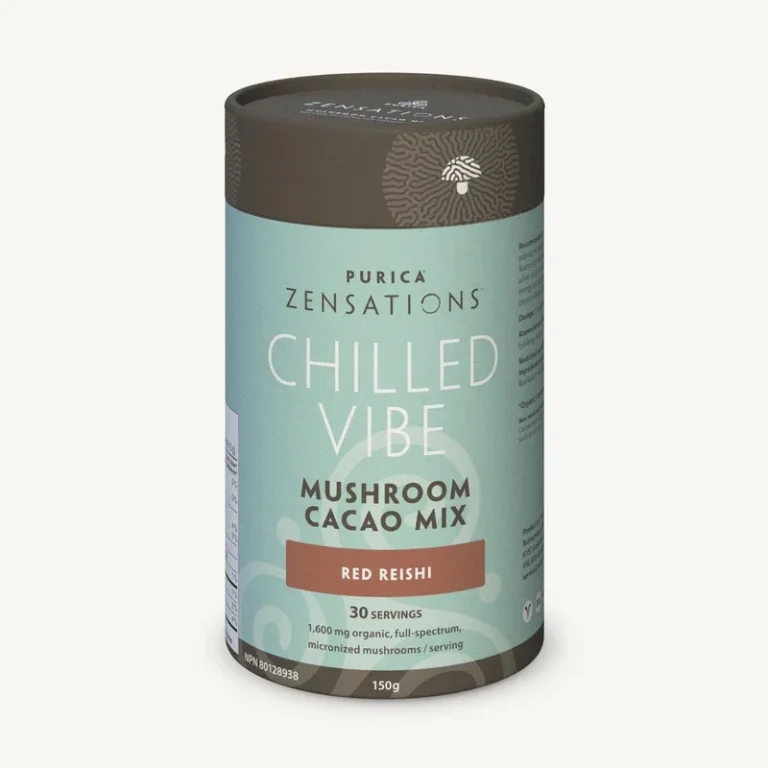
Overall Impressions
The Purica Zensations Chilled Vibe mushroom cacao mix is a delightful addition to any self-care regimen. It combines high-quality ingredients with therapeutic benefits to create a satisfying and healthful beverage.
Pros:
- Delicious and soothing flavor.
- Contains therapeutic-grade medicinal mushrooms.
- Supports relaxation and stress relief.
Cons:
- The earthy mushroom flavor might not appeal to everyone’s palate.
Conclusion
For those seeking a natural way to enhance relaxation and improve sleep quality, the Purica Zensations Chilled Vibe is a fantastic choice. It’s a testament to the company’s dedication to blending wellness with enjoyment, offering a unique and beneficial drink option.
I want to clarify that this review is entirely independent and not sponsored or endorsed by Purica. My positive experience with the Zensations Chilled Vibe mushroom cacao mix is genuine, and I wanted to share my thoughts with you.
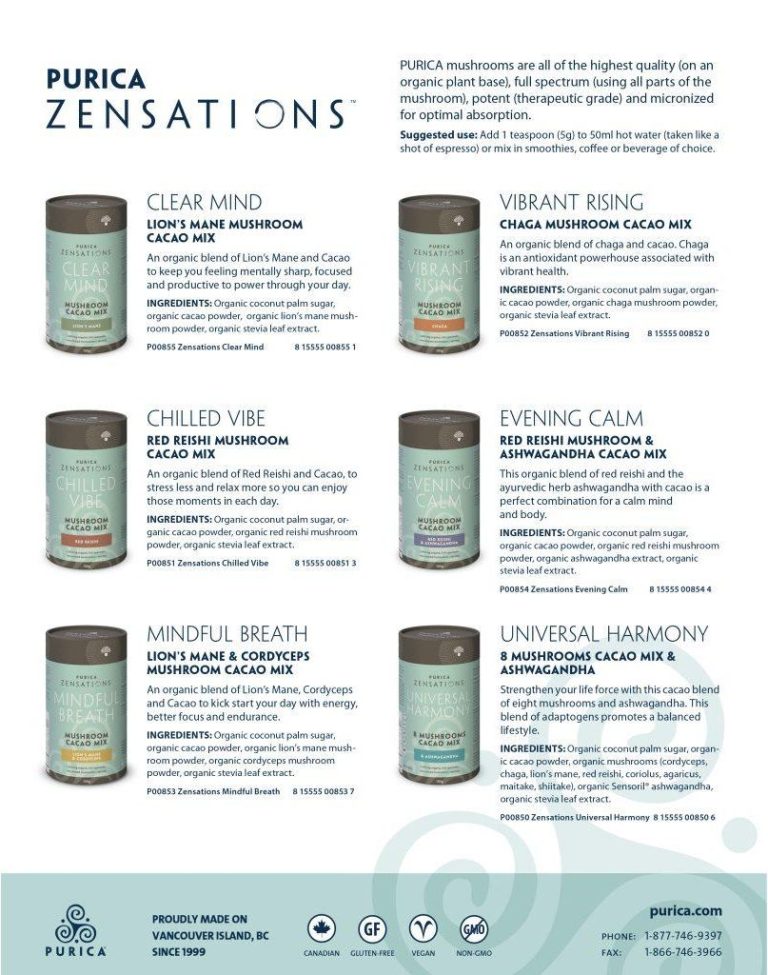
First Impressions and Taste
Upon trying the Chilled Vibe mix, I was immediately captivated by the rich, chocolatey aroma of organic cacao, which is perfectly complemented by the subtle earthiness of red reishi mushrooms. The blend is sweetened with organic coconut palm sugar and a hint of organic stevia leaf extract, creating a balanced sweetness without being overwhelming. This makes for a comforting and indulgent evening drink that I look forward to.
Ingredients and Benefits
- Organic Red Reishi Mushroom Powder: Known for its stress-relieving and immune-boosting properties, reishi mushrooms are a staple in traditional medicine for promoting relaxation and overall well-being.
- Organic Cacao Powder: Rich in antioxidants and naturally uplifting, cacao enhances mood and provides a delicious chocolate flavor.
- Organic Coconut Palm Sugar: A natural sweetener that adds a gentle sweetness while being lower on the glycemic index.
- Organic Stevia Leaf Extract: Used to enhance sweetness without adding calories.
Experience and Effects
Using the Chilled Vibe mix in the evening has become a calming ritual for me. It helps me unwind and prepare for a restful night's sleep. The relaxation effect can be attributed to the red reishi mushroom, which is renowned for its adaptogenic properties that help manage stress. After incorporating it into my routine, I’ve noticed a more serene transition into sleep and a sense of tranquility that lasts throughout the night.
Spiced Carrot Soup
Beta carotene, responsible for the vibrant orange hue of carrots, acts as a potent antioxidant. Research indicates that having low levels of beta carotene (a type of vitamin A) is linked to decreased cognitive performance, while increasing its intake might help guard against cognitive decline as we age.
Ingredients
- 2 tablespoons olive oil
- 1 cup chopped yellow onion
- 1 pound large carrots, peeled, cut into 1/2-inch dice (about 2 2/3 cups)
- 2 1/2 cups chicken or vegetable broth
- 1 1/2 teaspoons ground cumin
- 1 teaspoon ground turmeric
- 1/2 teaspoon ground cinnamon
- 1 tablespoon honey
- 1 teaspoon lemon juice
- salt and pepper to taste
- 1/2 cup plain yogurt, stirred to loosen
Preparation
- Heat oil in large saucepan over medium-high heat. Add onion and sauté about 2 minutes, stirring. Mix in carrots. Saute a few more minutes to begin softening and browning a bit.
- Add broth, cumin, cinnamon, and turmeric. Bring to boil. Reduce heat, cover, and simmer until carrots are very tender, about 20 minutes.
- Remove from heat and puree in batches in blender until smooth. Return to pan and stir in honey and lemon juice. Season with salt and pepper to taste.
- Serve with a drizzle of yogurt.
Source: Brainhq.com
Music and the Mind:
How Sound Waves Influence Brain Activity
Music has been an integral part of human culture for centuries, offering not just entertainment but also a profound impact on our cognitive and emotional well-being. The interplay between music and the brain is a fascinating subject that reveals how sound waves can influence our mood, focus, and overall brain function. Let's dive into the science behind music's impact on the mind and discover how we can harness its power for cognitive health.
The Effects of Music on Cognitive Health
Enhanced Memory and Learning:
- Listening to music, particularly classical compositions like those of Mozart, has been shown to improve memory and learning outcomes. This phenomenon, often referred to as the "Mozart Effect," suggests that music can enhance spatial-temporal reasoning.
Improved Focus and Concentration:
- Background music can enhance concentration, particularly when performing repetitive tasks. Genres like ambient music or soft instrumental tracks can create a conducive environment for sustained focus.
Stress Reduction and Emotional Regulation:
- Music has a unique ability to evoke emotions and reduce stress. Slow-tempo music can lower heart rate and blood pressure, promoting relaxation and emotional stability.
Increased Neuroplasticity:
- Engaging with music through playing an instrument or singing can increase neuroplasticity, the brain's ability to form new neural connections, enhancing cognitive flexibility and adaptability.
Exploring Different Genres of Music
Classical Music:
Known for its complex structures, classical music can enhance cognitive performance, memory, and focus. Pieces by Bach, Beethoven, and Mozart are often recommended for study sessions.
Jazz and Blues:
These genres can boost creativity and elevate mood. The improvisational nature of jazz encourages divergent thinking and problem-solving skills.
Pop and Rock:
Upbeat pop and rock songs can increase motivation and energy levels, making them ideal for workouts or tasks requiring a burst of energy.
Ambient and Nature Sounds:
These sounds provide a calming backdrop that can enhance focus and stress relief, perfect for meditation or relaxation.
Playlists and Music Therapy Techniques
Memory Boost Playlist:
- Include classical pieces like Beethoven's "Fur Elise" or Mozart's "Symphony No. 40" to enhance memory retention during study sessions.
Focus Enhancement Playlist:
- Incorporate ambient tracks or soundscapes, such as Brian Eno's "Music for Airports" or nature sound compilations, to maintain concentration.
Stress Relief Playlist:
- Feature slow-tempo music or soothing tracks like Enya's "Only Time" or Ludovico Einaudi's "Nuvole Bianche" to promote relaxation.
Conclusion
The relationship between music and the mind is a testament to the powerful influence of sound on our cognitive and emotional states. By incorporating music into our daily lives, we can enhance brain function, improve mood, and foster a sense of well-being. Whether you're studying, working, or simply unwinding, there's a perfect soundtrack waiting to elevate your experience.
Nature’s Impact on Brain Health:
The Benefits of Time Outdoors
In our fast-paced, technology-driven world, the simple act of stepping outside and immersing ourselves in nature can be incredibly beneficial for brain health. Research consistently shows that spending time in natural environments can reduce stress, enhance mood, and improve cognitive performance. Let’s explore how nature impacts our brain health and discover ways to incorporate more green time into our daily lives.
The Benefits of Nature on Brain Health
Stress Reduction: Nature naturally calms the mind and body, reducing levels of cortisol, the stress hormone. This calming effect can lead to improved mental clarity and emotional stability.
Improved Cognitive Function: Studies indicate that exposure to natural environments enhances attention span, memory, and problem-solving skills. The brain's prefrontal cortex, which is responsible for executive functions, can reset and recharge in natural settings.
Boosted Mood and Creativity: Being in nature increases the production of serotonin, the "feel-good" neurotransmitter, which can improve mood and foster creativity. Nature’s beauty inspires innovative thinking and a more positive outlook on life.
Incorporating Nature into Daily Life
Even if you live in an urban setting, there are several creative ways to bring more nature into your daily routine:
Take Short Walks: Find a nearby park or green space and take short walks during breaks or lunch hours. Even a brief nature walk can refresh your mind and boost productivity.
Create a Green Sanctuary at Home: Incorporate indoor plants into your living space to bring the calming effects of nature indoors. Plants like peace lilies and spider plants are easy to maintain and purify the air.
Exercise Outdoors: Swap the gym for an outdoor workout. Activities like running, cycling, or yoga in a natural setting can enhance the health benefits of exercise.
Mindful Nature Observation: Spend time simply observing and appreciating natural surroundings. This practice can be as simple as watching a sunset or listening to the sounds of a forest.
Expert Insights and Studies
Research highlights the profound impact nature has on mental health:
A study published in Environmental Health and Preventive Medicine found that participants who walked in a forest had lower blood pressure and cortisol levels compared to those who walked in an urban environment.
Another study in Frontiers in Psychology reported that participants who spent time in nature showed improved mood and reduced anxiety compared to those who didn't.
Experts suggest that even short, regular interactions with nature can lead to significant mental health benefits, advocating for urban planning that includes green spaces to enhance community well-being.
Conclusion
The connection between nature and brain health is clear: spending time outdoors can significantly benefit our mental and cognitive well-being. By making nature a regular part of our lives, we can harness its power to reduce stress, improve mood, and boost brain performance.
The Essential Guide to Self-Care:
Tips and Ideas for a
Healthier You
In our busy lives, self-care often takes a backseat, yet it's crucial for maintaining overall well-being and mental health. Prioritizing self-care helps reduce stress, boost mood, and improve physical and mental health. Here’s why self-care matters and how you can incorporate it into your daily routine:

Why Self-Care is Important
Stress Reduction: Regular self-care activities can help lower stress levels, preventing burnout and enhancing emotional resilience.
Improved Health: Engaging in self-care can boost your immune system, improve sleep, and increase energy levels.
Enhanced Productivity: Taking time for yourself can lead to greater focus and efficiency in daily tasks.
Financial Self-Care
Set a budget and track your spending to reduce financial stress.
Educate yourself about personal finance and investments.
Plan for future goals to give yourself peace of mind.
Physical Self-Care
Exercise regularly, even if it’s just a daily walk.
Prioritize sleep by maintaining a consistent schedule.
Eat a balanced diet rich in nutrients.
Spiritual Self-Care
Engage in practices that nourish your soul, such as prayer or meditation.
Spend time in nature to connect with the world around you.
Reflect on your values and align your actions with them.
Emotional Self-Care
Practice mindfulness or meditation to center your thoughts.
Keep a journal to process emotions and reflect on your day.
Allow yourself to feel and express emotions freely.
Creative Self-Care
Explore creative outlets like painting, writing, or music.
Allow yourself to be playful and experiment with new ideas.
Attend workshops or classes to expand your creative skills.
Social Self-Care
Spend quality time with friends and family.
Set boundaries to protect your time and energy.
Join social groups or clubs that interest you.
Mental Self-Care
Engage in activities that challenge your mind, like puzzles or learning new skills.
Take breaks from digital devices to reduce mental fatigue.
Read books or watch documentaries to stimulate your intellect.
Spinach Dhal
Split peas and other legumes are abundant in folic acid, a nutrient known to enhance verbal skills and memory performance. This may also help in postponing the onset of Alzheimer’s disease. Additionally, spinach and garlic offer benefits for brain health.
Ingredients
- 1 cup yellow split peas or split moong dal, soaked overnight in water
- 1 whole hot pepper of your choice
- 3 cups fresh spinach leaves, washed and dried
- 2 tbsp vegetable or canola oil
- 1 tsp black mustard seeds (can substitute brown or yellow mustard seeds)
- 1 tsp cumin seeds
- 2 large cloves garlic, thinly sliced
- Salt to taste
Preparation
- Rinse soaked peas twice, drain, and add to a 4 or 5 quart pot. Add 5 cups water and the whole hot pepper and stir.
- Cover pot, place over high heat, and bring to a boil. Let peas cook until you have the consistency of a pea soup. Most of the peas should have dissolved; use the back of your spoon to mash.
- Once the desired consistency has been reached, add the spinach and season the peas with salt to taste. Cover and reduce heat to low.
- While the peas are simmering, heat oil in a small frying pan over medium heat. Toss in mustard seeds. When the mustard seeds begin to pop, add the cumin and cook for 30 seconds more. Add the garlic and cook until it just starts to color.
- Remove spice mixture from heat and pour the contents into the simmering dhal. Stir everything together and let it simmer for one minute more.
- Remove from heat and serve with rice, roti, or bread—or eat it as a soup.
Source: Brainhq.com

Gratitude Exercises
Practicing gratitude can significantly enhance your mental well-being, fostering a positive outlook on life. Here’s an extensive list of gratitude exercises to incorporate into your daily routine:
Gratitude Journal: Write down three things you’re grateful for each day. This simple habit can shift your focus to the positive aspects of your life.
Thank You Notes: Write a thank you note to someone who has had a positive impact on your life. Deliver it personally or send it through mail to express your appreciation.
Gratitude Jar: Keep a jar where you drop a note of gratitude each day. Over time, you’ll have a collection of positive moments to reflect on.
Gratitude Meditation: Spend a few minutes in meditation, focusing on feelings of gratitude and the people and experiences you appreciate.
Daily Reflection: At the end of the day, reflect on positive experiences that happened, no matter how small.
Mindfulness Walk: Take a walk and focus on appreciating your surroundings, from the beauty of nature to the kindness of strangers.
Mindful Appreciation: Pick an object you use every day and take time to appreciate its purpose and function in your life.
Gratitude Partner: Share what you’re grateful for with a partner, friend, or family member. This can strengthen your relationship and mutual appreciation.
Gratitude Affirmations: Start your day with affirmations that express gratitude for your life and the people in it.
Savoring: When you experience something enjoyable, pause to fully appreciate the moment and express gratitude for it.
Gratitude Letter: Write a detailed letter of gratitude to someone who has been influential in your life but whom you haven’t properly thanked.
Acts of Kindness: Perform random acts of kindness and reflect on how these acts make you feel grateful for the ability to contribute positively to others.
Weekly Gratitude Review: Each week, review your gratitude entries and reflect on the positive patterns in your life.
Vision Board: Create a vision board that includes images and words that represent things you’re grateful for.
Family Gratitude Ritual: Incorporate a gratitude-sharing moment into your family meals or gatherings.
Practicing gratitude can offer various perspectives, such as increasing your emotional resilience or enhancing your empathy towards others. Some may find that focusing on gratitude helps them navigate challenging times with a more positive outlook.
